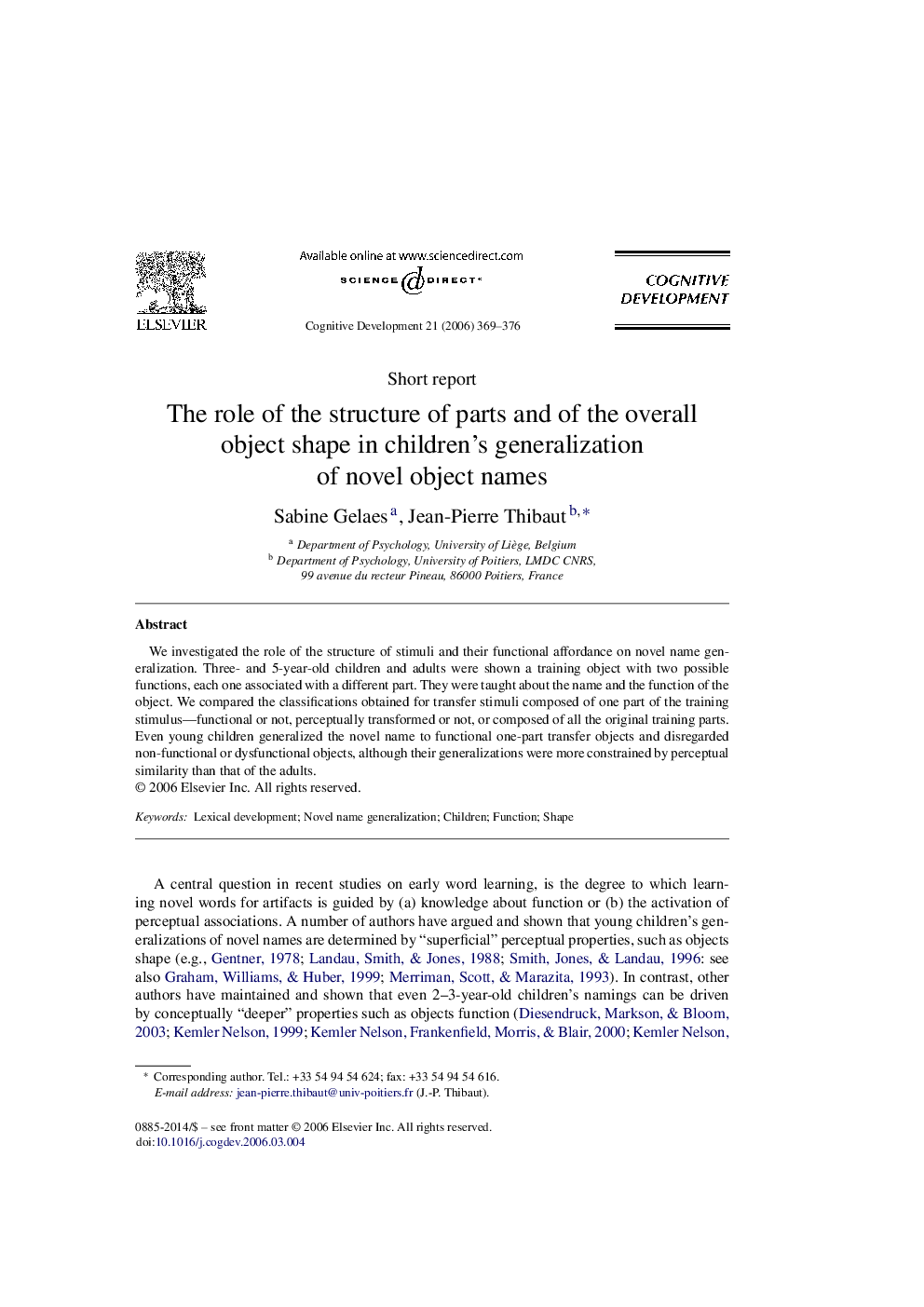| Article ID | Journal | Published Year | Pages | File Type |
|---|---|---|---|---|
| 916794 | Cognitive Development | 2006 | 8 Pages |
We investigated the role of the structure of stimuli and their functional affordance on novel name generalization. Three- and 5-year-old children and adults were shown a training object with two possible functions, each one associated with a different part. They were taught about the name and the function of the object. We compared the classifications obtained for transfer stimuli composed of one part of the training stimulus—functional or not, perceptually transformed or not, or composed of all the original training parts. Even young children generalized the novel name to functional one-part transfer objects and disregarded non-functional or dysfunctional objects, although their generalizations were more constrained by perceptual similarity than that of the adults.
